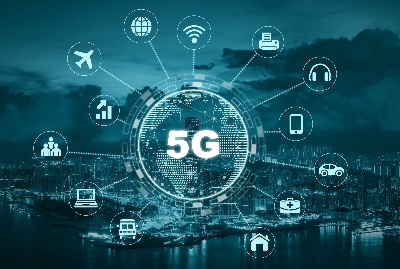
5G technology is revolutionizing remote monitoring and management across various sectors by providing the speed, reliability, and capacity necessary for sophisticated applications.
Its ability to connect numerous devices, transmit data with minimal delay, and process large volumes of information opens new opportunities for efficiency, safety, and innovation in various industries.







As 5G continues to evolve, we can expect even more advanced applications to emerge, further enhancing monitoring and management capabilities.
5G technology is significantly enhancing remote monitoring and management across various industries due to its high-speed connectivity, low latency, and massive device support. Here are some key applications of 5G in this domain:
### 1. **Manufacturing and Industry 4.0**
– **Smart Factories:** 5G enables continuous monitoring of manufacturing processes through IoT sensors that provide real-time data on equipment performance, productivity levels, and inventory management.
– **Predictive Maintenance:** By analyzing real-time sensor data from machinery, manufacturers can predict failures before they happen, reducing downtime and maintenance costs.
– **Remote Equipment Control:** Operators can control machinery from remote locations, ensuring safety and efficiency, especially in hazardous environments.
### 2. **Healthcare**
– **Telemedicine:** 5G supports high-definition video conferencing, allowing healthcare professionals to conduct remote consultations, making healthcare more accessible.
– **Remote Patient Monitoring:** Wearable devices can continuously monitor vital signs (e.g., heart rate, blood pressure) and send data to healthcare providers in real time, enabling timely interventions if anomalies are detected.
– **Robotic Surgery:** Low latency ensures that robotic surgical tools can be controlled remotely with precision, facilitating procedures that may be performed miles away from the patient.
### 3. **Smart Cities**
– **Traffic Management:** 5G enhances real-time traffic monitoring through interconnected sensors and cameras, optimizing traffic flow and reducing congestion with immediate feedback mechanisms.
– **Public Safety:** Surveillance cameras and drone monitoring can provide real-time visuals to law enforcement, improving response times during emergencies.
– **Environmental Monitoring:** Sensors can detect air quality, noise levels, and other environmental factors, allowing city planners to make data-driven decisions for urban development.
### 4. **Agriculture**
– **Precision Farming:** Remote monitoring systems equipped with sensors can track soil moisture, crop health, and weather conditions, enabling farmers to optimize irrigation and fertilization practices.
– **Drones and Robotics:** 5G facilitates the use of drones for crop surveillance and automated machinery for planting and harvesting, ensuring efficient operations across large areas.
– **Livestock Health Monitoring:** wearable devices for livestock can provide real-time health and location data, enabling farmers to manage their herds effectively.
### 5. **Energy and Utilities**
– **Smart Grids:** 5G supports the integration of IoT devices into energy grids for real-time monitoring of energy usage, outages, and demand response, enhancing grid reliability and efficiency.
– **Remote Monitoring of Infrastructure:** Utilities can monitor pipelines, power lines, and other infrastructure remotely, detecting leaks or faults early and preventing major emergencies.
– **Renewable Energy Management:** Real-time data analytics help optimize the performance of renewable energy sources, such as wind and solar, facilitating better grid management.
### 6. **Transportation and Logistics**
– **Fleet Management:** Companies can monitor vehicle health, optimize routes, and track deliveries in real time, improving operational efficiency and customer satisfaction.
– **Connected Vehicles:** 5G enables vehicle-to-everything (V2X) communication, allowing cars to communicate with each other and surrounding infrastructure, enhancing safety and efficiency.
– **Autonomous Vehicles:** Low latency and high bandwidth are crucial for real-time data processing, enabling the safe operation of autonomous and semi-autonomous vehicles.
### 7. **Construction and Infrastructure**
– **Remote Site Monitoring:** Drones equipped with cameras and sensors can monitor construction sites, ensuring compliance with safety regulations and tracking progress in real time.
– **Asset Management:** IoT devices can track the location and condition of construction machinery and materials, improving asset utilization and reducing theft.
– **Safety Monitoring:** Wearable tech for construction workers can alert supervisors to dangerous situations or fatigue, enhancing workplace safety.
### 8. **Retail**
– **Inventory Management:** 5G-enabled sensors can provide real-time inventory updates, reducing stockouts and optimizing supply chain management.
– **Customer Experience:** In-store navigation and personalized offers can be facilitated through connected devices, enhancing customer engagement by providing real-time data to sales personnel.
– **Remote Management Systems:** Security cameras and monitoring systems can be managed remotely, allowing for surveillance of retail locations from anywhere.
### 9. **Telecommunications and Network Management**
– **Network Performance Monitoring:** Telecom companies can utilize 5G to monitor the health of network components in real time, quickly identifying and addressing issues to ensure service reliability.
– **Smart Maintenance Solutions:** Remote diagnosis and management of network equipment can reduce operational costs and improve response times for repairs or upgrades.
### 10. **Environmental Monitoring**
– **Wildlife Tracking and Conservation:** 5G-powered IoT devices enable researchers to monitor endangered species and their habitats in real time, providing valuable data for conservation efforts.
– **Natural Disaster Management:** Sensors can provide real-time monitoring of environmental conditions (e.g., earthquakes, flooding), improving disaster response and management strategies.


Leave a Reply